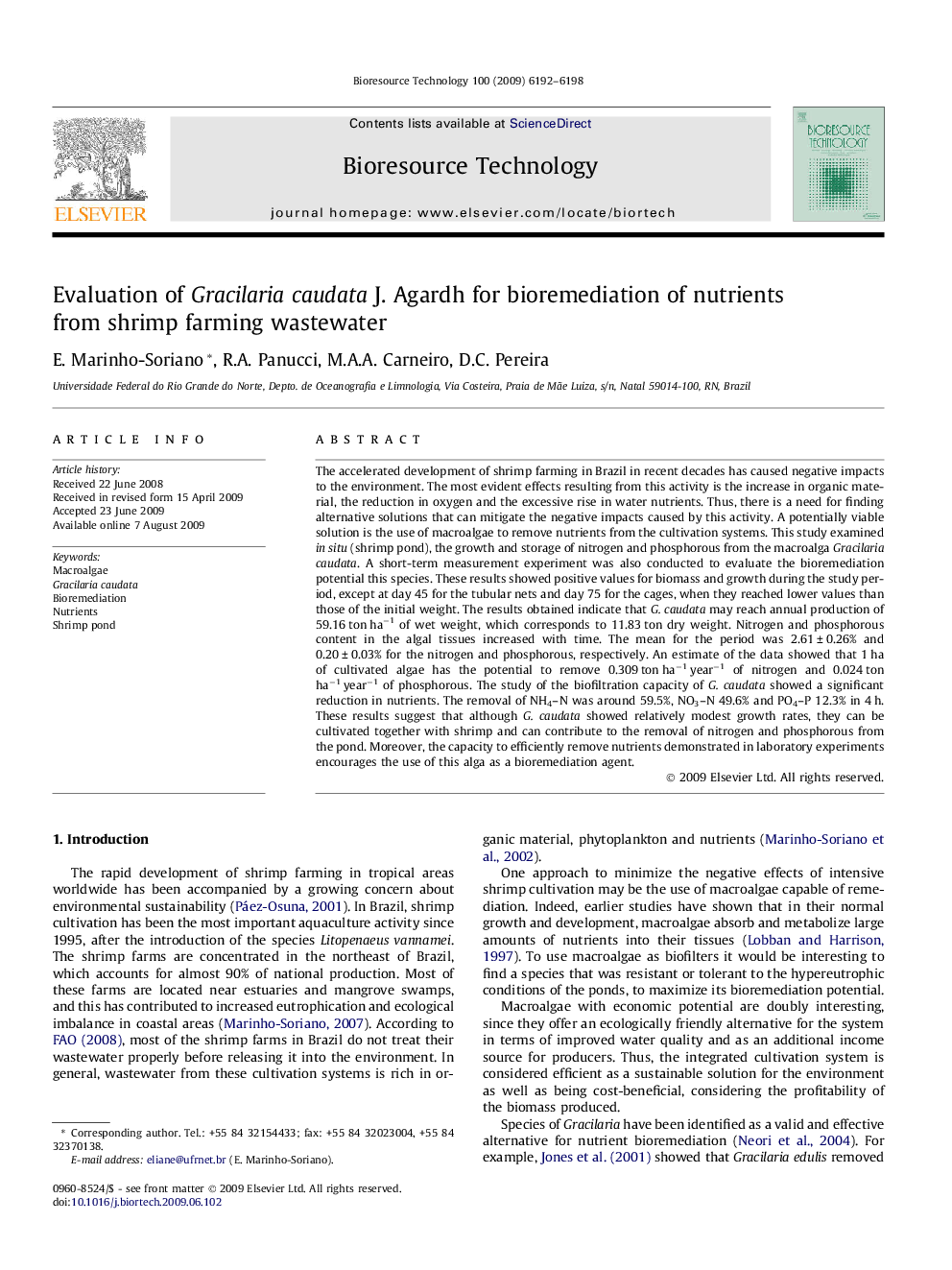| کد مقاله | کد نشریه | سال انتشار | مقاله انگلیسی | نسخه تمام متن |
|---|---|---|---|---|
| 683415 | 1460040 | 2009 | 7 صفحه PDF | دانلود رایگان |

The accelerated development of shrimp farming in Brazil in recent decades has caused negative impacts to the environment. The most evident effects resulting from this activity is the increase in organic material, the reduction in oxygen and the excessive rise in water nutrients. Thus, there is a need for finding alternative solutions that can mitigate the negative impacts caused by this activity. A potentially viable solution is the use of macroalgae to remove nutrients from the cultivation systems. This study examined in situ (shrimp pond), the growth and storage of nitrogen and phosphorous from the macroalga Gracilaria caudata. A short-term measurement experiment was also conducted to evaluate the bioremediation potential this species. These results showed positive values for biomass and growth during the study period, except at day 45 for the tubular nets and day 75 for the cages, when they reached lower values than those of the initial weight. The results obtained indicate that G. caudata may reach annual production of 59.16 ton ha−1 of wet weight, which corresponds to 11.83 ton dry weight. Nitrogen and phosphorous content in the algal tissues increased with time. The mean for the period was 2.61 ± 0.26% and 0.20 ± 0.03% for the nitrogen and phosphorous, respectively. An estimate of the data showed that 1 ha of cultivated algae has the potential to remove 0.309 ton ha−1 year−1 of nitrogen and 0.024 ton ha−1 year−1 of phosphorous. The study of the biofiltration capacity of G. caudata showed a significant reduction in nutrients. The removal of NH4–N was around 59.5%, NO3–N 49.6% and PO4–P 12.3% in 4 h. These results suggest that although G. caudata showed relatively modest growth rates, they can be cultivated together with shrimp and can contribute to the removal of nitrogen and phosphorous from the pond. Moreover, the capacity to efficiently remove nutrients demonstrated in laboratory experiments encourages the use of this alga as a bioremediation agent.
Journal: Bioresource Technology - Volume 100, Issue 24, December 2009, Pages 6192–6198